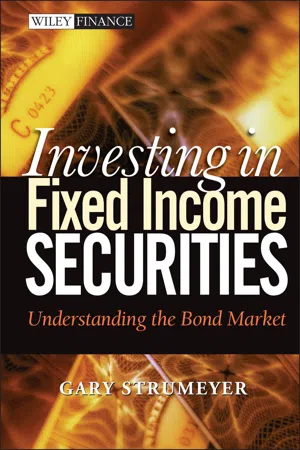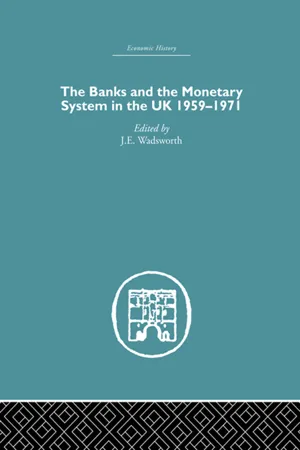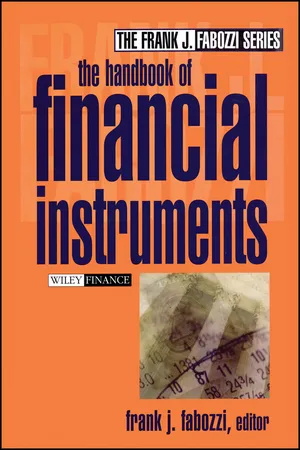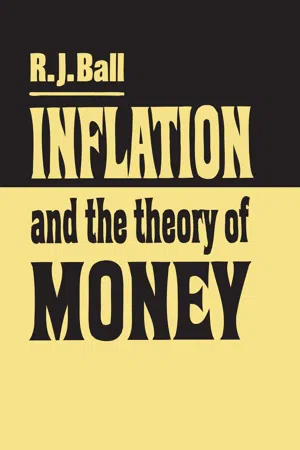Economics
US Treasury Bills
US Treasury Bills are short-term debt securities issued by the US government with maturities ranging from a few days to one year. They are considered one of the safest investments because they are backed by the full faith and credit of the US government. Treasury Bills are sold at a discount from their face value and the difference represents the investor's return.
Written by Perlego with AI-assistance
Related key terms
Related key terms
1 of 4
Related key terms
1 of 3
4 Key excerpts on "US Treasury Bills"
- eBook - ePub
Investing in Fixed Income Securities
Understanding the Bond Market
- Gary Strumeyer(Author)
- 2012(Publication Date)
- Wiley(Publisher)
Treasuries are obviously not entirely free from risk. Despite having little or no credit risk, the value of Treasury securities fluctuates with changes in market interest rates (interest rate risk). The degree of price volatility will depend on many factors including the duration of the bond and the coupon size (see Chapter 2 for discussion of duration and convexity). In addition, some Treasury securities are issued with call options, providing the Treasury with an option to retire the debt prior to its stated maturity. In a volatile interest rate environment, this is a significant risk for investors. Additionally, issues affecting the underlying creditworthiness of Treasuries can surface, however rarely. In early 1996, Moody’s Investors Service threatened a possible downgrade of U.S. Treasuries, due to the failure of the U.S. Congress to raise the debt ceiling during a heated balanced budget negotiation. The gridlock subsided, but the situation provides a reminder that nothing can be taken entirely for granted, even the apparent riskless nature of U.S. Treasuries.Security Types
Treasury bills (T-bills) are short-term debt obligations of the U.S. Treasury with a maturity of one year or less. Thirteen (13) and twenty-six (26) week T-bills are sold directly to the public by the Treasury. The cash management and four-week bills must be purchased through a bank or broker. Treasury bills are discount securities; they are sold at a discount from face value. At maturity, the investor redeems the bill for full face value. The difference between the purchase price and the amount that is paid at maturity represents the investor’s interest. For example, if you buy a $100,000 (face or par value) 26-week T-bill for $99,250, at maturity you will receive $100,000. The difference of $750 represents your interest. Interest on T-bills accrues according to a calculation method known as actual/360. Interest accrues on the actual number of days between purchase and maturity and each year is assumed to contain 360 days.Treasury notes - J.E. Wadsworth, J.E. Wadsworth(Authors)
- 2013(Publication Date)
- Routledge(Publisher)
6Old and New Activities
The Treasury Bill – The Story of an Economist’s Invention February 1961
Everyone has heard about Britain’s Treasury bills, but few people have ever seen one, even though investment in such bills broadened notably in post-war years. Holdings of Treasury bills are in effect restricted to those prepared to make a minimum outlay of about £5000, and in practice the bills are usually left with the bank or other agent of the investor. The Treasury bill was introduced into the City less than a hundred years ago and was derived, like the cheque, from the centuries-old bill of exchange; yet it is not convincingly portrayed by the statutory definition of its commercial forebear – a definition burnt into the minds of all bank officials from their student days. In appearance and texture a Treasury bill is rather like an old-style five pound note, presenting features – of wording, alternations between italic and other typefaces and so on – which give it an air of an age long past. It bears prominently its title, date of issue and maturity, and amount. The substance of the document reads: ‘THIS TREASURY BILL entitles or Order to Payment of [e.g.] ONE HUNDRED THOUSAND POUNDS at the BANK OF ENGLAND out of the Consolidated Fund of the United Kingdom on the 1ST DAY OF FEBRUARY, 1961’. It is signed by the Secretary to the Treasury. An asterisk at the name space leads to a footnote: ‘If this blank be not filled in, the bill will be paid to bearer.’Essentially, a Treasury bill is a document by which the government borrows money at short term, and it is the principal constituent of the ‘floating’ part of the national debt. Dealings in Treasury bills take place mainly in the discount market and not, as do transactions in most other government securities, on the stock exchange. Nor do transfers have to be recorded in the books of the Bank of England or elsewhere; if the name space is left blank, the bill is a bearer security, and if a name is inserted, then ownership is transferred by endorsement. A Treasury bill has a term of ninety-one days, or occasionally of sixty-three days, the nominal amount of the bill being repayable at these intervals – without days of grace – after the date of issue.- eBook - ePub
- Frank J. Fabozzi, Frank J. Fabozzi(Authors)
- 2018(Publication Date)
- Wiley(Publisher)
Chapter 6Money Market Instruments
Frank J. Fabozzi, Ph.D., CFAAdjunct Professor of Finance School of Management Yale UniversitySteven V. Mann, Ph.D.Professor of Finance The Moore School of Business University of South CarolinaMoorad ChoudhrySenior Fellow Centre for Mathematical Trading and Finance City University Business SchoolThe money market is the market for financial instruments that have a maturity of one year or less. The financial instruments traded in this market include securities issued by the U.S. Department of the Treasury (specifically, Treasury bills), U.S. federal agency securities (discount note and various “bill” products), depository institutions (negotiable certificates of deposit, federal funds, and bankers acceptances), insurance companies (funding agreements), commercial paper, medium-term notes, repurchase agreements, short-term municipal securities, short-term mortgage-backed securities, and asset-backed securities. In this chapter we cover all but the last three financial instruments.U.S. TREASURY BILLS
The U.S. Treasury is the largest single borrower in the world. Treasury bills are short-term discount instruments with original maturities of less than one year. All Treasury securities are backed by the full faith and credit of the U.S. government. This fact, combined with their volume (in terms of dollars outstanding) and liquidity, afford Treasury bills a central place in the money market. Indeed, interest rates on Treasury bills serve as benchmark short-term rates throughout the U.S. economy as well as in international money markets.Treasury bills are issued at a discount to par value, have no coupon rate, and mature at par value. The Treasury currently issues on a regular basis bills with original maturities of 4 weeks, 13 weeks (3 months) and 26 weeks (6 months), as well as cash-management bills with various maturities.Cash management bills - eBook - ePub
- R. J. Ball(Author)
- 2017(Publication Date)
- Routledge(Publisher)
1 at which time cash will be returned to the system, but the longer the period to maturity the greater the effect of freezing the liquidity of the lenders and reducing the potential demands on the Government to pay cash. The short term or floating debt consisting of bills of three months maturity presents a different picture, because only a short period elapses before it may be called on to redeem these liabilities. The outstanding supply of bills therefore constitutes a substantial potential supply of cash available in the short period that makes it difficult to operate effectively on the cash base of the banks. If the volume of bills is not reduced, cash must be in adequate supply to enable them to be taken up, while if cash is reduced, some other form of finance must be found. In practice there is a grave danger that the authorities may abrogate their control over the cash base in the interests of financing the short term debt.If the authorities engage in open market operations and sell securities to the public the cash base is reduced and the banks call in loans from the discount market. The discount houses are then forced into the central bank. However, as the bills used as collateral for loans from the bank mature, the situation is different from when the bills are commercial bills drawn on the public. In the latter case as the bills mature funds are transferred from the banking system to the central bank to pay off the loan, so reducing the cash base of the banks. However in the case of Treasury bills this is not so, unless the bills are paid off by the Treasury from the proceeds of fresh borrowing from the public or the financial system or from the proceeds of a surplus on revenue account. If the Treasury simply replaces the old Treasury bills by new ones, the shortage of cash will drive the discount houses back into the bank. If the bill rate is permitted to adjust freely it can rise sufficiently in principle to offset the penal effects of the central bank’s discount rate and so keep the discount houses permanently in the bank with little or no loss. So long as the Treasury is not prepared to reduce the volume of bills this must be permitted to occur if the total supply of bills is to be taken up, unless the initial rise in the bill rate persuades the public to switch into the bill market on a large scale. This exemplifies a further fundamental difference between the working of a system based on commercial and a system based on Treasury bills ; in the former case the rise in the bill rate automatically checks the supply of bills as the cost of borrowing rises, whereas in the latter it does not.
Index pages curate the most relevant extracts from our library of academic textbooks. They’ve been created using an in-house natural language model (NLM), each adding context and meaning to key research topics.
Explore more topic indexes
Explore more topic indexes
1 of 6
Explore more topic indexes
1 of 4



